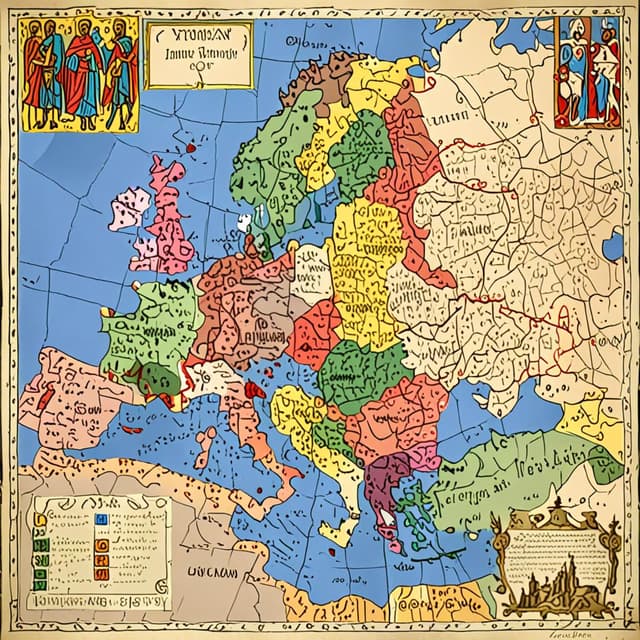
| Ruled | 10th to 13th centuries |
| Collapse | 13th century |
| Aftermath | Political fragmentation and upheaval in Central Europe |
| Established by | Henry the Fowler |
| Established in | 919 AD |
| Notable Events | Territorial expansion • Administrative centralization • Cultural flourishing (Ottonian Renaissance) |
| Ruling Dynasty | Ottonian Dynasty |
| Relationship with Papacy | Long-running power struggle |
The Ottonian Dynasty was the ruling royal house of the Holy Roman Empire from 919 to 1250 AD. Named after its first monarch, Henry the Fowler, the Ottonians presided over a period of imperial expansion, administrative reforms, and cultural flourishing known as the Ottonian Renaissance. Despite frequent power struggles with the Papacy, the Ottonians were able to solidify imperial authority over the fragmented kingdoms and principalities that made up the Holy Roman Empire.
The Ottonian Dynasty emerged following the death of the last Carolingian ruler of East Francia in 911 AD. After a brief interregnum, the Saxon duke Henry the Fowler was elected king in 919, becoming the first ruler of the Holy Roman Empire from the Ottonian line.
Henry and his successors sought to strengthen the monarchy's position by cultivating close ties with the Catholic Church, investing in imperial infrastructure, and incorporating neighboring Slavic realms into the Empire. This allowed the Ottonians to wield greater centralized authority compared to the more decentralized Carolingian model.
Under Otto I, Henry's son, the Holy Roman Empire experienced a period of dramatic territorial growth, incorporating the Kingdom of Italy, the Kingdom of Burgundy, and numerous Slavic principalities to the east. Otto also successfully asserted imperial supremacy over the Papacy, crowning himself Holy Roman Emperor in 962 AD.
The reigns of Otto II and Otto III ushered in the cultural apogee of Ottonian rule, known as the Ottonian Renaissance. This era saw a flourishing of Romanesque architecture, illuminated manuscripts, metalwork, and ivory carving that showcased a distinct Ottonian artistic style, blending classical and Byzantine influences.
The Ottonians were major patrons of the arts and promoted monasteries as centers of learning, helping spread Scholasticism and Gregorian chant. They also oversaw administrative reforms that strengthened the imperial bureaucracy and taxation system.
Despite their close relationship with the Catholic Church, the Ottonians frequently clashed with the Papacy over the limits of imperial authority. A series of power struggles, known as the Investiture Controversy, pitted successive Holy Roman Emperors against Popes over the right to appoint bishops and other clergy.
While the Papacy was able to force some concessions from weaker Ottonian rulers, the dynasty ultimately prevailed in asserting its prerogatives. The Concordat of Worms in 1122 reached a compromise between imperial and papal claims, with the Emperor retaining significant influence over ecclesiastical appointments.
The Ottonian Dynasty began to unravel in the late 12th century under the rule of Henry VI. Attempts to transform the Holy Roman Empire into a hereditary monarchy sparked a backlash from both secular princes and the Papacy. After Henry's premature death, a prolonged period of instability and civil war ensued, with rival claimants to the imperial throne.
The final Ottonian monarch, Conrad IV, was unable to restore order and the dynasty collapsed in 1250 AD. The resulting power vacuum led to the Interregnum, a 20-year period of political fragmentation in Central Europe marked by the rise of autonomous territorial states, the increased power of the nobility, and the decline of imperial authority.
The Ottonian Dynasty left an enduring mark on the Holy Roman Empire and the development of medieval Europe. Their emphasis on a more decentralized, federal model of imperial governance laid the foundations for the complex patchwork of kingdoms, duchies, and principalities that would characterize the Empire in later centuries.
The artistic and cultural achievements of the Ottonian Renaissance, particularly in architecture and illuminated manuscripts, have also been highly influential. Ottonian styles can be seen in subsequent Romanesque and Gothic art across Central Europe.
While the Ottonian collapse ushered in an era of political turmoil, their legacy as effective, if contentious, rulers of the Holy Roman Empire ensured the Ottonians would remain a subject of historical fascination. Their skillful navigation of the delicate balance between secular and ecclesiastical power continues to be studied by scholars of medieval statecraft and church-state relations.